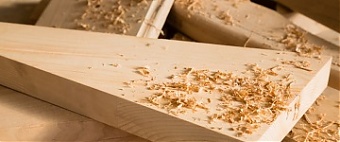Analytics, Banks, Direct Speech, Financial Services, Latvia
International Internet Magazine. Baltic States news & analytics
Friday, 19.04.2024, 18:40
Imports of goods have reached a historic high; exports witness the sustainability of business competitiveness
 Print version
Print version |
|---|
At the same time, an improvement in the terms of trade was supported by the rising prices on Latvia's main exports (food, wood, metals and cereals). Latvia's market shares of commodity exports have expanded in the first half of the year, thereby confirming that the competitiveness of Latvia's businesses remains sustainable.
According to the data by the Central Statistical Bureau of Latvia, export and import growth was positive in July 2018: 8.3% and 14.5% respectively. A drop in individual commodity groups in comparison with June can be explained by some seasonal factors (in exports of cereals) and a decline in re-exports (exports of mechanical appliances).
The nominal value of the exports of goods has increased by 9.5% year-on-year over the first seven months of 2018. The most significant contributors to exports were the major export commodity groups, i.e. wood and products of wood, agricultural and food products, mechanical appliances and electrical equipment, base metals and articles of base metals. Growth was mainly achieved on account of higher real volumes of exports, whereas the price effect was negligible. According to the preliminary estimates by the World Trade Organisation, Latvia's commodity export market share in global imports continued to increase in the first half of 2018.
Although Latvia's export market shares in some traditional export markets (Estonia, Lithuania, Poland and Germany) have contracted, this can mainly be explained by weaker re-export flows vis-à-vis those countries. Of the traditional export markets, growing export market shares were reported in the case of the United Kingdom, Sweden, Finland, Russia and Denmark. The role of domestic producers in commodity export growth has become more prominent this year, as suggested by the fact that the exports of locally produced goods exceed re-exports. Domestic exports have been mainly driven by the wood, food, cereals and metal production sectors. Wood industry has been one of the main drivers of manufacturing growth and exports over the most recent years, benefiting from the previously made investments in this sector.
The nominal value of imports of goods increased by 9.1% year-on-year over the first seven months of 2018. Imports reached an all-time high in monthly terms in July. In the first half of the year, imports grew primarily on account of an annual increase in the real volumes, supported by investment in construction and manufacturing, particularly in machinery and equipment. The fact that a part of the new investment projects in manufacturing are focussed on boosting productivity and export innovations is positive news. Ongoing construction of shopping centres, office premises and infrastructure will continue to support demand for manufacturing outputs like building materials, metal structures etc. Availability of the European Union structural funds financing and rising private consumption also continue to benefit import growth.
Confidence indicators published by the European Commission show that the views of businesses about their competitiveness positions in the third quarter have improved significantly in the domestic market as well as the EU market and outside the EU.
Although the external environment remains favourable at this point, exporters are still facing some downside risks. Geopolitical risks, various tariff and sanction wars between the leading global economies as well as climate change and extreme weather conditions (draughts, hurricanes etc.) still threaten the growth prospects of external trade. Considering the high degree of production capacity utilisation, rising wages, labour shortages and the low level of investment made in the previous years, export growth is expected to moderate slightly in the second half of the year.








 «The Baltic Course» Is Sold and Stays in Business!
«The Baltic Course» Is Sold and Stays in Business!

